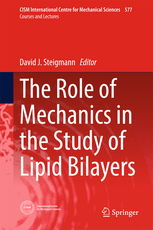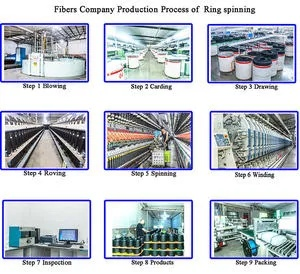The Role of Technology in Supporting the Development of Textile Industries
Technology has played a crucial role in the development of the textile industry. With advancements in technology, the industry has been able to reduce costs, increase efficiency, and improve quality. The use of automation and robotics has made it possible for textile companies to produce larger quantities of high-quality products at lower prices. Additionally, the use of advanced materials such as polyester and nylon has allowed for the creation of more durable and stylish clothing. The integration of digital technologies such as computer-aided design (CAD) and computer-integrated manufacturing (CIM) has also revolutionized the industry by streamlining production processes and increasing productivity. Furthermore, the use of artificial intelligence and machine learning has enabled textile companies to analyze large amounts of data and optimize their supply chain management. Overall, the continued investment in technology is expected to continue driving innovation and growth in the textile industry.
Introduction: In today's globalized economy, textile industries play a crucial role in providing employment opportunities and contributing to economic growth. However, the success of these industries is often dependent on their ability to adapt to technological advancements and maintain a competitive edge. This is where technology comes into play as it provides a range of tools and methods that can help textile companies enhance their efficiency, reduce costs, and improve quality. In this article, we will explore some of the key technologies that can be used to support the development of textile industries, including automation, artificial intelligence, and renewable energy sources. We will also provide an example of how these technologies have been implemented in a real-world scenario.
Automation: One of the most significant ways that technology can support the development of textile industries is through automation. Automation refers to the use of machines or software to perform tasks that would otherwise require human labor. In the textile industry, this can include processes such as knitting, weaving, and dyeing. By implementing automation, textile companies can increase production rates, reduce errors, and improve consistency across different batches.

For example, a leading textile company in China has successfully automated its knitting process using robotic arms. This has resulted in a significant reduction in production time and improved quality control. The company was able to achieve this by investing in advanced sensors and software that enable the robots to accurately replicate the patterns and techniques used in traditional knitting.
Another example is the use of computer-aided design (CAD) software for textile pattern design. CAD software enables designers to create complex patterns and designs with greater precision and ease. This has enabled textile companies to produce more stylish and innovative products, while also reducing the time and cost associated with traditional design methods.
AI: Artificial intelligence (AI) is another area where technology can significantly impact the textile industry. AI can be used to analyze data from various sources, such as weather patterns, market trends, and consumer preferences. This information can then be used to optimize production processes, improve inventory management, and develop new products.
For example, a major textile company in the US has implemented AI algorithms to predict demand for certain types of fabrics. This allows them to adjust their inventory levels accordingly, ensuring that they have enough stock on hand while minimizing waste. Additionally, AI can be used to analyze customer feedback and tailor product offerings to meet specific needs.
Renewable Energy Sources: Finally, technology can also play a role in supporting the development of textile industries by promoting sustainable practices. Renewable energy sources such as solar and wind power can be used to power textile factories, reducing dependence on fossil fuels and minimizing environmental impact.
For example, a textile company in India has installed solar panels on its factory roofs to generate electricity. This has not only reduced their reliance on traditional energy sources but also helped to offset their carbon footprint. Additionally, the company has implemented other sustainable practices such as using eco-friendly materials and recycling waste products.
Conclusion: The integration of technology into the textile industry is essential for its continued success and growth. From automation and AI to renewable energy sources, there are many ways that technology can be used to support the development of textile industries. By embracing these technologies, textile companies can improve their efficiency, reduce costs, and meet the demands of a rapidly changing market. As the world continues to move towards sustainability and innovation, it is clear that technology will continue to play a vital role in shaping the future of the textile industry.
随着经济的快速发展,纺织行业作为我国的重要产业之一,其发展水平直接影响到国家的经济实力和人民的生活质量,为了满足日益增长的市场需求,辅助建设纺织厂成为了当前的重要任务,本文将围绕辅助建设纺织厂的主题,从策略制定、案例分析等方面进行深入探讨。
辅助建设纺织厂策略
市场调研与分析
在辅助建设纺织厂之前,首先需要进行全面的市场调研与分析,通过收集行业数据、市场需求、竞争对手情况等信息,了解当前纺织行业的发展趋势和市场需求,还需要对当地的经济环境、政策法规等进行深入了解,为后续的决策提供依据。
技术研发与设备选型

在辅助建设纺织厂的过程中,技术研发和设备选型是两个重要的环节,需要结合市场需求和技术发展趋势,进行技术研发和创新,还需要根据厂区的实际情况,选择合适的设备型号和供应商,确保设备的可靠性和稳定性。
环保与可持续发展
在辅助建设纺织厂的过程中,环保和可持续发展也是非常重要的考虑因素,需要采取有效的环保措施,降低生产过程中的污染排放和能耗消耗,还需要注重员工的培训和教育,提高员工的环保意识和素质。
案例分析
某纺织厂辅助建设案例
某纺织厂为了满足市场需求,决定进行辅助建设,在市场调研与分析环节中,该厂收集了大量的行业数据和市场需求信息,发现当前市场上对高品质、高附加值的纺织品需求量不断增加,该厂还了解到当地政府对于纺织行业的支持政策,为后续的决策提供了有力的依据。
在技术研发与设备选型环节中,该厂选择了先进的纺织技术设备和环保型设备,确保了生产的可靠性和稳定性,该厂还注重员工的培训和教育,提高了员工的环保意识和素质,该纺织厂成功建设了一座现代化的纺织厂,满足了市场的需求。
辅助建设纺织厂的优缺点分析
优点:该纺织厂采用了先进的纺织技术设备和环保型设备,提高了生产效率和质量;该厂注重员工的培训和教育,提高了员工的素质和技能水平,该厂还注重生产过程中的环保和可持续发展,符合了当前社会的需求和趋势。
缺点:辅助建设纺织厂需要投入大量的资金和资源,需要考虑到成本效益的问题;还需要考虑到当地的政策和环境因素,确保建设的合法性和合规性。
辅助建设纺织厂是一项重要的任务,需要从策略制定、市场调研与分析、技术研发与设备选型、环保与可持续发展等方面进行综合考虑,在具体实施过程中,还需要注重细节和问题的解决,通过有效的策略和措施,可以有效地推动纺织行业的发展和进步,还需要注重员工的培训和教育,提高员工的素质和技能水平,为纺织行业的发展提供有力的保障和支持。
Articles related to the knowledge points of this article:



